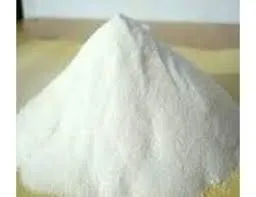
Jul . 26, 2024 16:22 Back to list
Exploring the Applications and Benefits of Hydroxypropyl Methylcellulose in Various Industries
The Use of Hydroxypropyl Methylcellulose Versatile Applications in Modern Industries
Hydroxypropyl methylcellulose (HPMC) is a non-ionic, cellulose ether that has garnered significant attention across various industries due to its diverse range of applications. Derived from natural cellulose, HPMC undergoes chemical modification, enabling it to exhibit properties such as water solubility, film-forming capability, and thickening behavior. These attributes make it a crucial component in pharmaceuticals, food production, construction, and personal care products.
The Use of Hydroxypropyl Methylcellulose Versatile Applications in Modern Industries
In the realm of food production, HPMC is widely employed as a thickener, emulsifier, and stabilizer. Its unique properties allow it to enhance the texture and consistency of various food products such as sauces, dressings, and baked goods. HPMC not only improves the mouthfeel of these products but also extends their shelf life by preventing ingredient separation and maintaining moisture. Furthermore, it offers a suitable option for gluten-free formulations, enabling those with dietary restrictions to enjoy a variety of foods without compromising on quality.
use of hydroxypropyl methylcellulose

The construction industry has also recognized the value of HPMC, particularly in its use as a modifier in cement-based materials. When added to mortar and plaster, HPMC improves workability and adhesion, making it easier to apply these materials during construction. Its water-retaining properties are particularly beneficial as they minimize the risk of premature drying, which can lead to cracking and reduced performance. Additionally, HPMC enhances the overall durability and resistance of building materials against environmental factors.
Personal care products are yet another domain where HPMC plays a vital role. It is commonly found in cosmetics, skincare formulations, and hair care products due to its thickening and film-forming characteristics. In lotions and creams, HPMC helps to stabilize emulsions, providing a pleasant texture and improving the product's application. Its ability to form a protective barrier on the skin enhances moisture retention, making it a popular ingredient in moisturizing formulations. Additionally, HPMC is utilized in hair styling products for its film-forming properties, allowing for flexible hold and improved shine.
Despite its numerous advantages, the use of HPMC is not without challenges. The sourcing of cellulose, a natural material, raises concerns regarding sustainability and environmental impact. As the demand for HPMC increases, industries are urged to adopt responsible sourcing practices and explore the potential of bio-based alternatives. Furthermore, the quality and performance of HPMC can vary based on factors such as the degree of substitution and molecular weight, which necessitates rigorous testing and quality control.
In conclusion, hydroxypropyl methylcellulose is a remarkable compound with a broad spectrum of applications across various sectors. Its versatility, coupled with its effectiveness as an excipient, thickener, and stabilizer, underscores its importance in modern formulations. As industries continue to innovate and expand, HPMC will likely play a pivotal role in meeting the demands for high-performance products that align with consumer expectations and sustainability goals. Through responsible use and continuous research, HPMC can remain a vital ingredient in the development of advanced materials and formulations.
-
Versatile Hpmc Uses in Different Industries
NewsJun.19,2025
-
Redispersible Powder's Role in Enhancing Durability of Construction Products
NewsJun.19,2025
-
Hydroxyethyl Cellulose Applications Driving Green Industrial Processes
NewsJun.19,2025
-
Exploring Different Redispersible Polymer Powder
NewsJun.19,2025
-
Choosing the Right Mortar Bonding Agent
NewsJun.19,2025
-
Applications and Significance of China Hpmc in Modern Industries
NewsJun.19,2025







